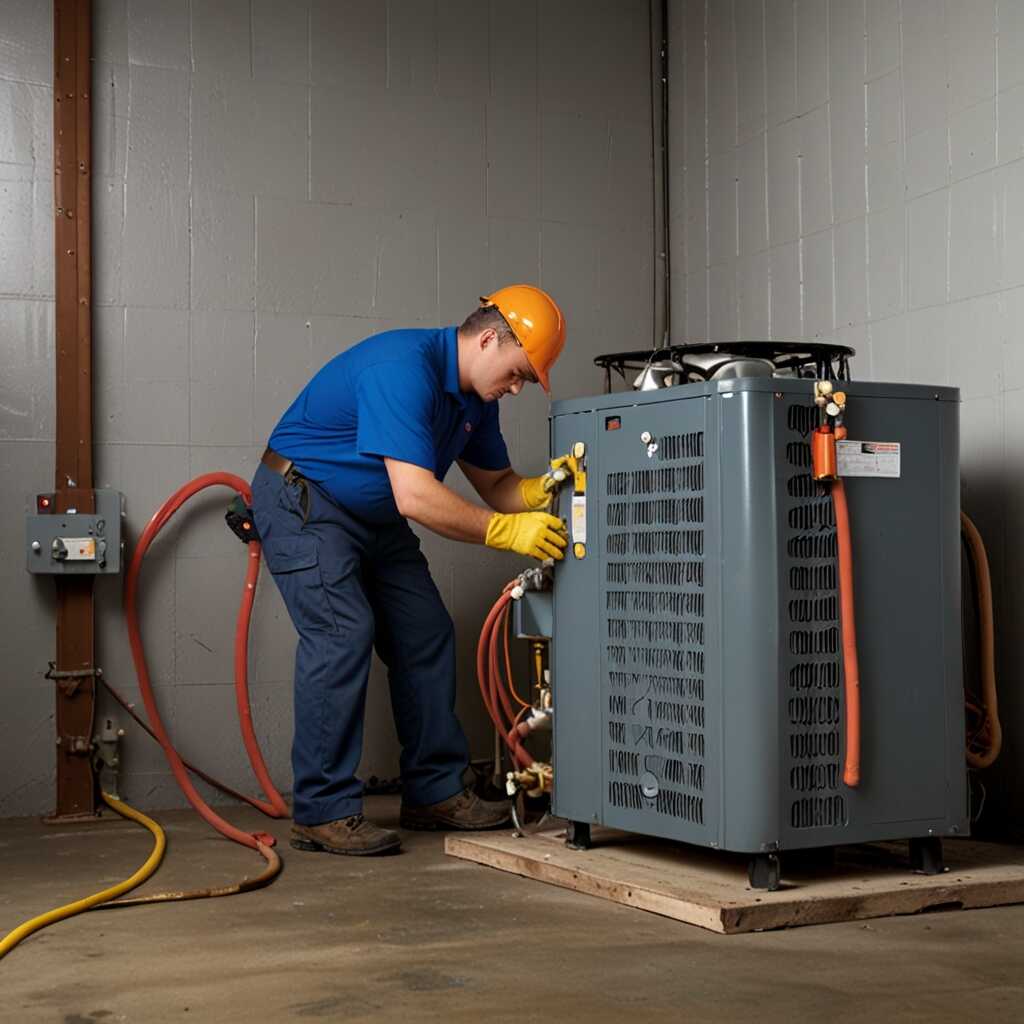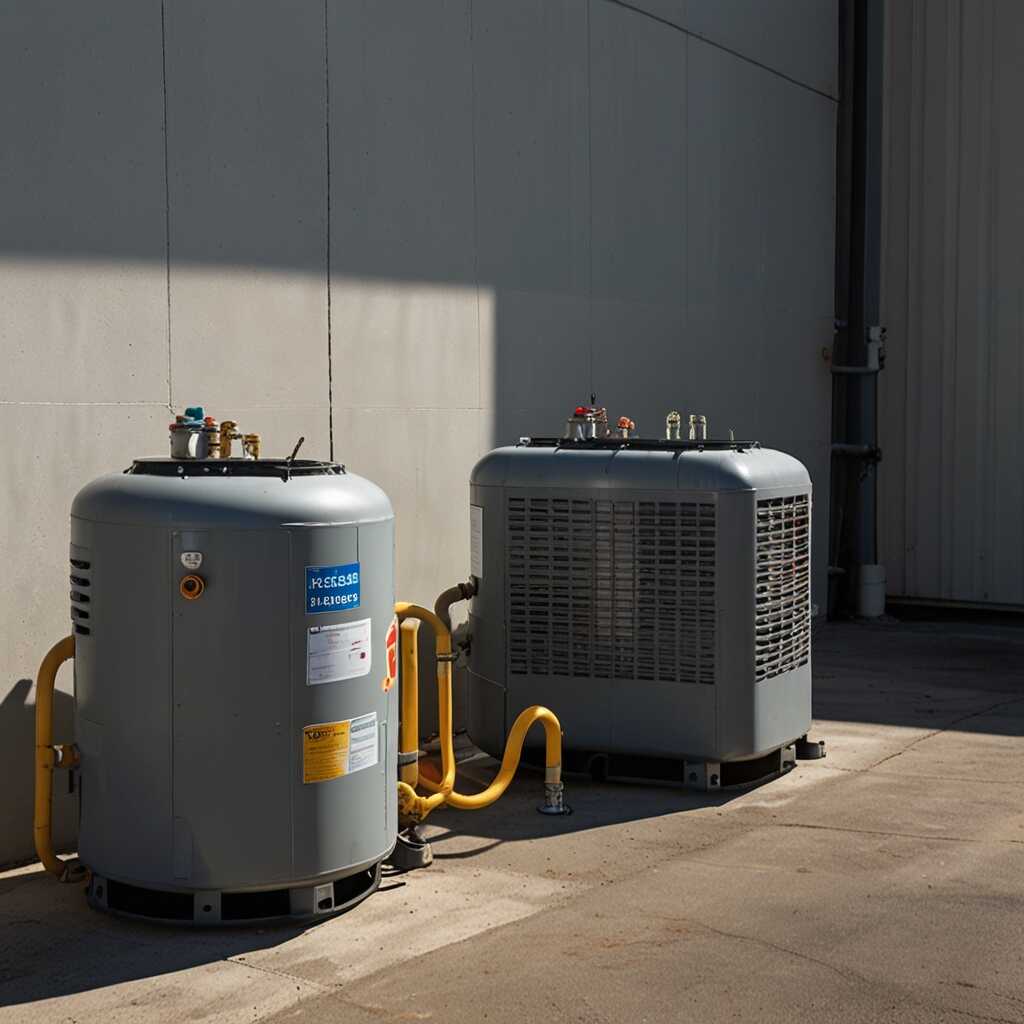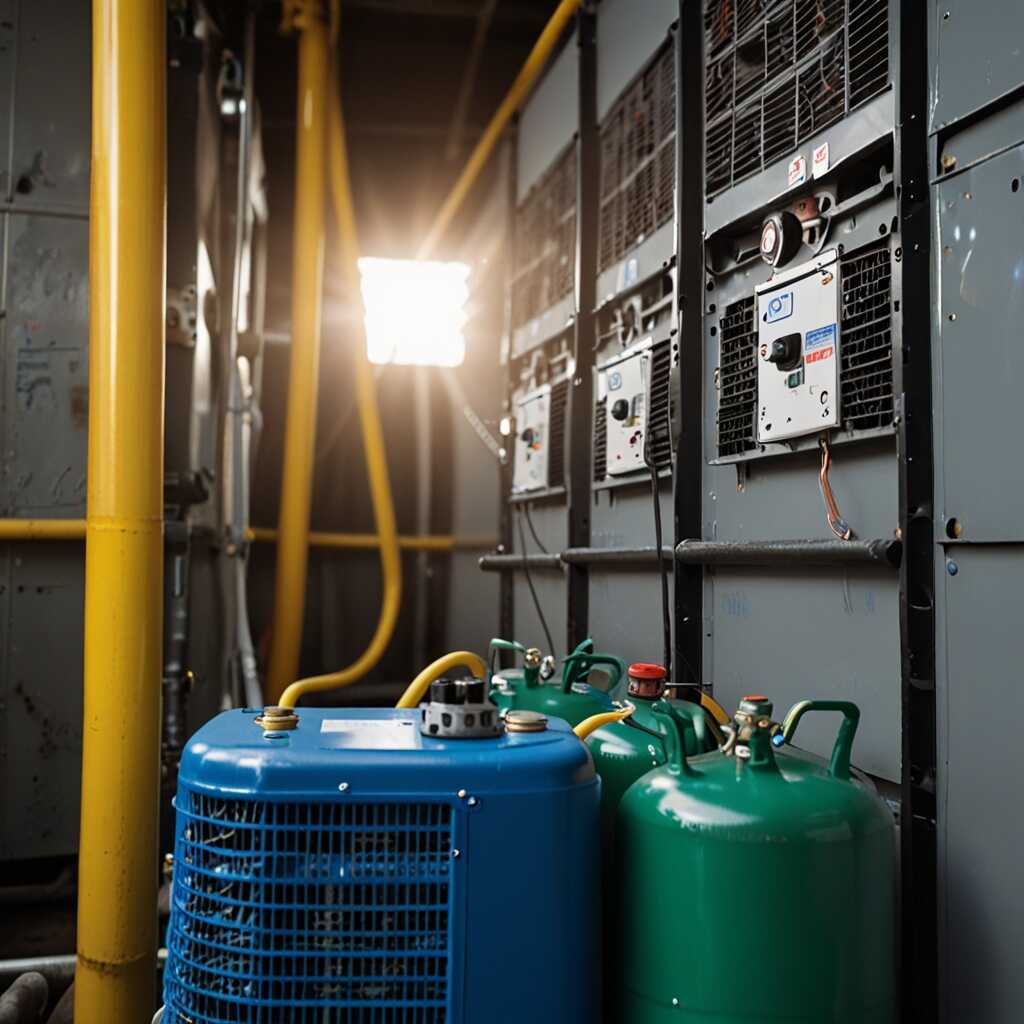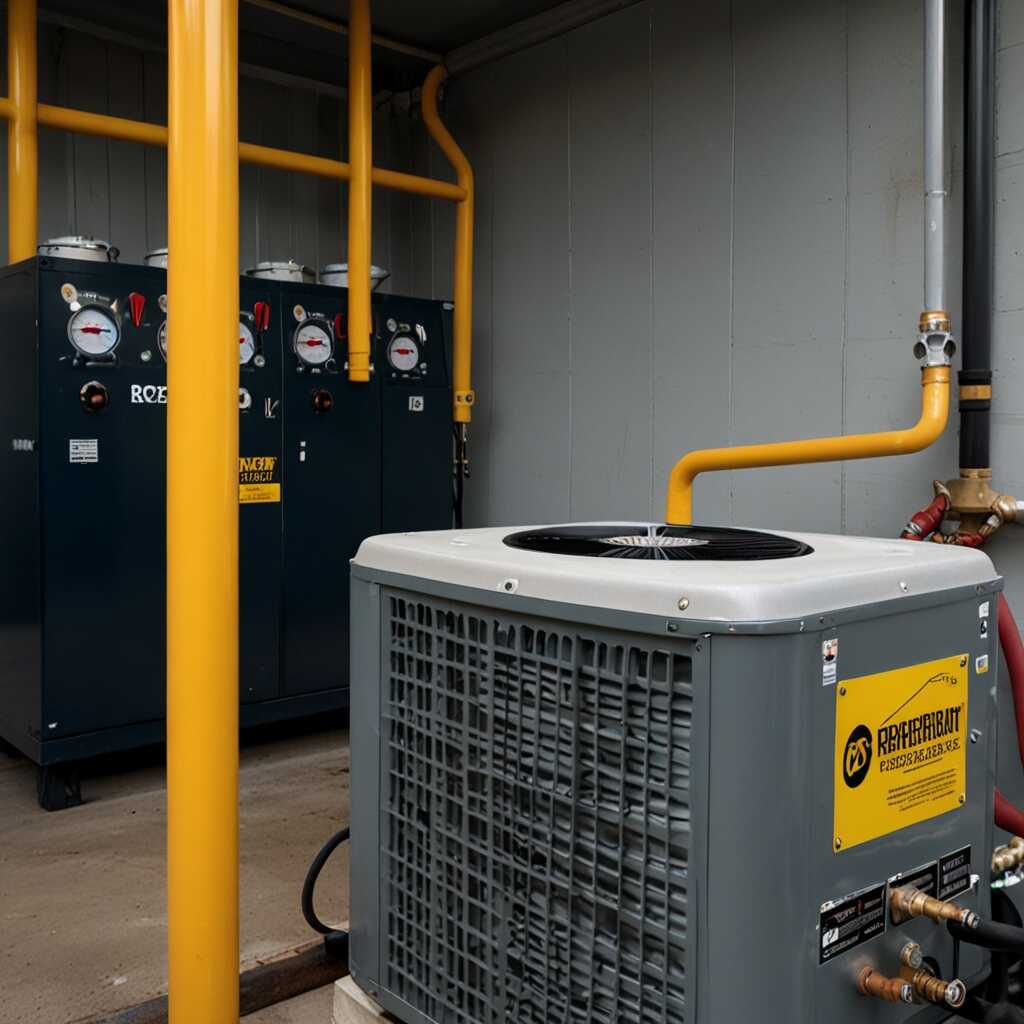The advantages of refrigerant recovery machines with reverse flow capabilities are significant for HVAC professionals. These machines improve the efficiency of refrigerant recovery processes, making it easier to collect and recycle refrigerants. By using reverse flow technology, HVAC technicians can recover refrigerants faster and with more accuracy. At Refrigerant Recovery Pro, we provide expert guidance on selecting the best recovery machines to enhance your operations and meet regulatory requirements.
Overview of Refrigerant Recovery Machines and Their Importance
Refrigerant recovery machines are essential tools in HVAC systems. They take in refrigerant from air conditioning and refrigeration units safely. These machines ensure efficient refrigerant management while complying with environmental standards. They operate by drawing refrigerant from the system and storing it in a tank. This process prevents harmful refrigerants from escaping into the atmosphere. Machines with reverse flow capabilities enhance the recovery process. They allow for faster and more efficient refrigerant transfer, improving overall system efficiency. HVAC professionals must consider features like reliability, performance, and user-friendliness when selecting recovery machines.
Key Features of Refrigerant Recovery Machines with Reverse Flow
When selecting refrigerant recovery machines, HVAC professionals should focus on specific features. Reverse flow capabilities enable the machine to transfer refrigerant quickly in both directions. This increases the speed of the refrigerant recovery process. Look for machines designed with durable components that withstand regular use. A reliable machine should have considerable tank capacity and host advanced monitoring features. These features help technicians track refrigerant levels. Equipment review data also highlights the performance efficiency of various models. Experts recommend looking for machines that comply with the latest environmental compliance standards, like EPA regulations.
Advantages of Reverse Flow Technology in Recovering Refrigerants
Reverse flow technology in refrigerant recovery machines offers significant benefits. Enhanced efficiency is one of its key features, as it enables faster recovery times. Improved accuracy in diagnostics is another advantage, providing precise information about the refrigerant state. This technology plays a crucial role in the reliability and performance of recovery operations. It ensures HVAC professionals can trust their equipment to deliver optimal results during refrigerant recovery procedures.
Efficiency Gains with Reverse Flow Technology
Reverse flow technology enhances refrigerant recovery efficiency considerably. It allows for quicker gas transfer due to its design, minimizing the time spent on recovery tasks. Many recovery machines equipped with this technology can reduce recovery times by an average of 30%. The improved flow also ensures that technicians can accurately diagnose refrigerant issues by providing real-time data during the recovery process. This capability enables quick identification of potential problems, ensuring that repairs or maintenance can be addressed promptly.

Differences Between Conventional and Reverse Flow Refrigerant Recovery Machines
Conventional refrigerant recovery machines operate by removing refrigerant in a single direction, utilizing only one flow path. In contrast, reverse flow refrigerant recovery machines can reverse their flow direction, allowing for more efficient refrigerant recovery. This feature helps expedite the recovery process and enhances overall recovery efficiency. When comparing features, HVAC professionals should evaluate recovery speed, portability, durability, and specific applications that suit their needs. Reverse flow machines can often recover refrigerants in almost half the time of conventional machines, especially during large-scale tasks.
Performance Metrics of Refrigerant Recovery Machines
Performance metrics are crucial when selecting between recovery machines. Reverse flow refrigerant recovery machines exhibit superior recovery efficiency, reducing the time required to recover refrigerants significantly. HVAC professionals need to assess the machine’s recovery rate, typically measured in pounds per minute, and its ability to handle different refrigerants. Many models can recover up to 80% of refrigerant within a 5-minute cycle, which is a marked improvement over conventional models. Understanding these metrics helps in making informed decisions and selecting the best machine that enhances recovery tasks.
Numerical Insights on Recovery Equipment Functionality
- Recovery machines can save up to 90% of refrigerant during extraction.
- Most units operate at a speed between 2 to 3 pounds per minute.
- Reverse flow technology can double extraction efficiency compared to traditional methods.
- Over 80% of HVAC technicians prefer machines with advanced functionality.
- Many models boast a recovery tank capacity ranging from 30 to 50 pounds.
- Some recovery machines feature a built-in purge to remove contaminants effectively.
- Typical lifespan of high-quality recovery machines is 10 to 15 years with proper maintenance.

Compliance Standards and Environmental Considerations for Recovery Machines
Regulatory compliance for refrigerant recovery includes following EPA standards. These standards ensure that refrigerants are recovered safely and minimize environmental impact. Reverse flow machines significantly contribute to these compliance standards. They help in preventing leakage while ensuring maximum recovery. It is crucial for HVAC professionals to choose machines that are EPA-certified and built to conform to regulations. The data shows that these machines can recover up to 95% of refrigerants effectively.
How Reverse Flow Machines Enhance Environmental Compliance
Reverse flow machines are designed specifically to improve environmental compliance. They provide a reliable solution for effective refrigerant recovery. By efficiently handling refrigerants, these machines reduce the risk of leakage. They are thoroughly tested to meet regulatory standards, ensuring a high recovery rate. Many models can handle multiple refrigerant types, making them versatile in various HVAC applications. This feature aids HVAC professionals in ensuring compliance with both EPA standards and local regulations. Using reverse flow machines protects the environment by minimizing harmful emissions.

Essential Features to Look For When Selecting a Recovery Machine
When choosing a refrigerant recovery machine, several critical features should be considered. Focus on the recovery machine efficiency, which includes the ability to recover refrigerants quickly and thoroughly. Look for models with reverse flow capabilities; these enhance efficiency by allowing for easier recovery of refrigerants from both vapor and liquid phases. Check for recovery specifications that detail the type of refrigerants the machine can handle. Durability is equally important, so consider machines made from sturdy construction materials that increase longevity. Also, ensure the machine includes essential safety features like high-pressure and over-temperature protection to promote safe operation.
Understanding Recovery Machine Efficiency and Performance
Recovery machine efficiency depends on several factors, including the technology used and the design features incorporated into the machine. Models designed with advanced compressors often provide better performance and faster recovery times. These machines can easily manage trips back and forth between vapor and liquid states. Look for performance ratings or reviews that indicate a consistent recovery rate, typically ranging between 0.05 to 0.10 pounds per minute or higher for high-quality options. These specifications prove essential for HVAC professionals seeking machines that not only deliver results but also ensure compliance with environmental regulations. Regular testing results help professionals verify the machine’s reliability and efficiency to make informed purchases.
Key Advantages of Enhanced Recovery Systems
- Increased efficiency minimizes refrigerant loss during recovery.
- Advanced models can handle various refrigerants, making them versatile.
- Recovery machines with reverse capabilities simplify the recovery process.
- Technicians can save time on complex jobs using these advanced features.
- Improved environmental compliance due to effective refrigerant management.
- Portable options are available for on-site jobs with high mobility needs.
- Many units come with user-friendly interfaces, easing training for new personnel.

Common Problems and Solutions for Refrigerant Recovery Machines
HVAC professionals commonly face issues with refrigerant recovery machines such as compressor failures, refrigerant leaks, and inadequate recovery rates. Troubleshooting compressor failures involves checking for electrical issues, ensuring proper oil levels, and verifying system pressures. Cleaning filters and testing connections can help restore performance. The average time required for refrigerant recovery testing varies depending on the machine’s efficiency and refrigerant type, often taking 30 minutes to several hours. Regular maintenance strategies enhance the reliability and longevity of the equipment.
Best Practices for Maintaining Refrigerant Recovery Machines
Maintaining refrigerant recovery machines requires regular visual inspections, testing for refrigerant leaks, and ensuring all connections are tight. It is essential to clean the machine’s filters and coils to enhance recovery efficiency. Technicians should follow the manufacturer’s maintenance schedule for parts replacement. Keeping the machine in a clean, dry place prevents dust and moisture from affecting performance. Documenting maintenance activities offers valuable data for future troubleshooting and ensures that the machine operates at its best performance. Refrigerant Recovery Pro provides comprehensive equipment reviews that offer insights into the best practices for maintaining your recovery unit.
Maintenance Strategies for Maximizing Equipment Lifespan
Maintaining refrigerant recovery machines involves several key practices. Regular cleaning of the external components helps prevent dust build-up. Checking hose connections ensures secure fittings and maximizes efficiency. Users should schedule routine inspections to identify any wear and tear. Keeping refrigerant levels within optimal ranges ensures reliable performance. Manufacturers often provide guidelines on maintenance, making it essential to follow their recommendations. Additionally, documenting maintenance activities helps track performance over time.
Recommended Maintenance Routine for Refrigerant Recovery Machines
A recommended maintenance routine for refrigerant recovery machines includes tasks like checking oil levels, replacing filters, and inspecting hoses every month. Regular testing of units helps identify potential issues before they escalate. Users should also clean the condenser coils periodically to improve efficiency. Replace worn parts immediately to avoid performance issues. Scheduling annual professional servicing with certified technicians from brands like Refrigerant Recovery Pro ensures your equipment remains in top shape. This routine is crucial for reliable operation and prolonging lifespan.
Brands and Their Strengths in Recovery Technology
- Brand A offers compact, lightweight machines ideal for small jobs.
- Brand B specializes in high-capacity units that are perfect for large-scale operations.
- Brand C emphasizes user-friendly designs, making training straightforward.
- Brand D focuses on energy-efficient models to reduce operational costs.
- Brand E provides robust customer support and extensive product warranties.
- Demographic experts prefer machines that comply with EPA regulations for environmental safety.
- HVAC trainers recommend brands based on ease of use and reliability for educational purposes.
Innovations and Future Directions in Refrigerant Recovery Technology
The HVAC industry sees many advancements in refrigerant recovery technology, especially regarding reverse flow capabilities. These innovations help improve efficiency, reliability, and overall performance. Companies like Recovery Pro, among other leading brands, focus on designing machines that handle directions seamlessly. By 2025, the market anticipates the release of numerous new models specifically engineered to enhance refrigerant recovery efficiency, including reverse flow technologies.
Key Features of Innovative Refrigerant Recovery Machines
Refrigerant recovery machines designed with reverse flow capabilities feature advanced designs that allow for both efficient recovery and quick disposal. These machines minimize downtime and maximize productivity, offering features such as dual-directional flow valves and robust pumps that enhance operational reliability. New models come with extensive testing and user reviews confirming their performance and durability. The increase in energy efficiency improvements helps HVAC professionals save costs while ensuring compliance with environmental regulations.